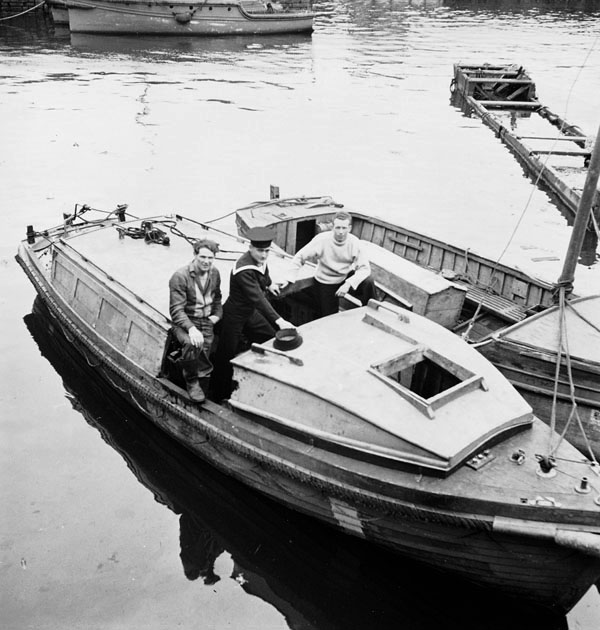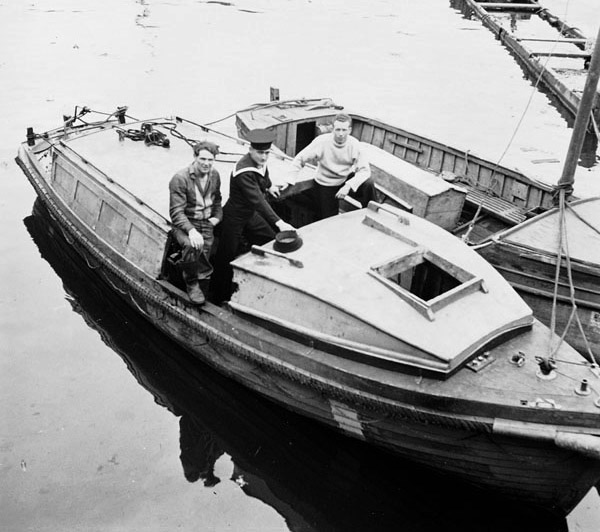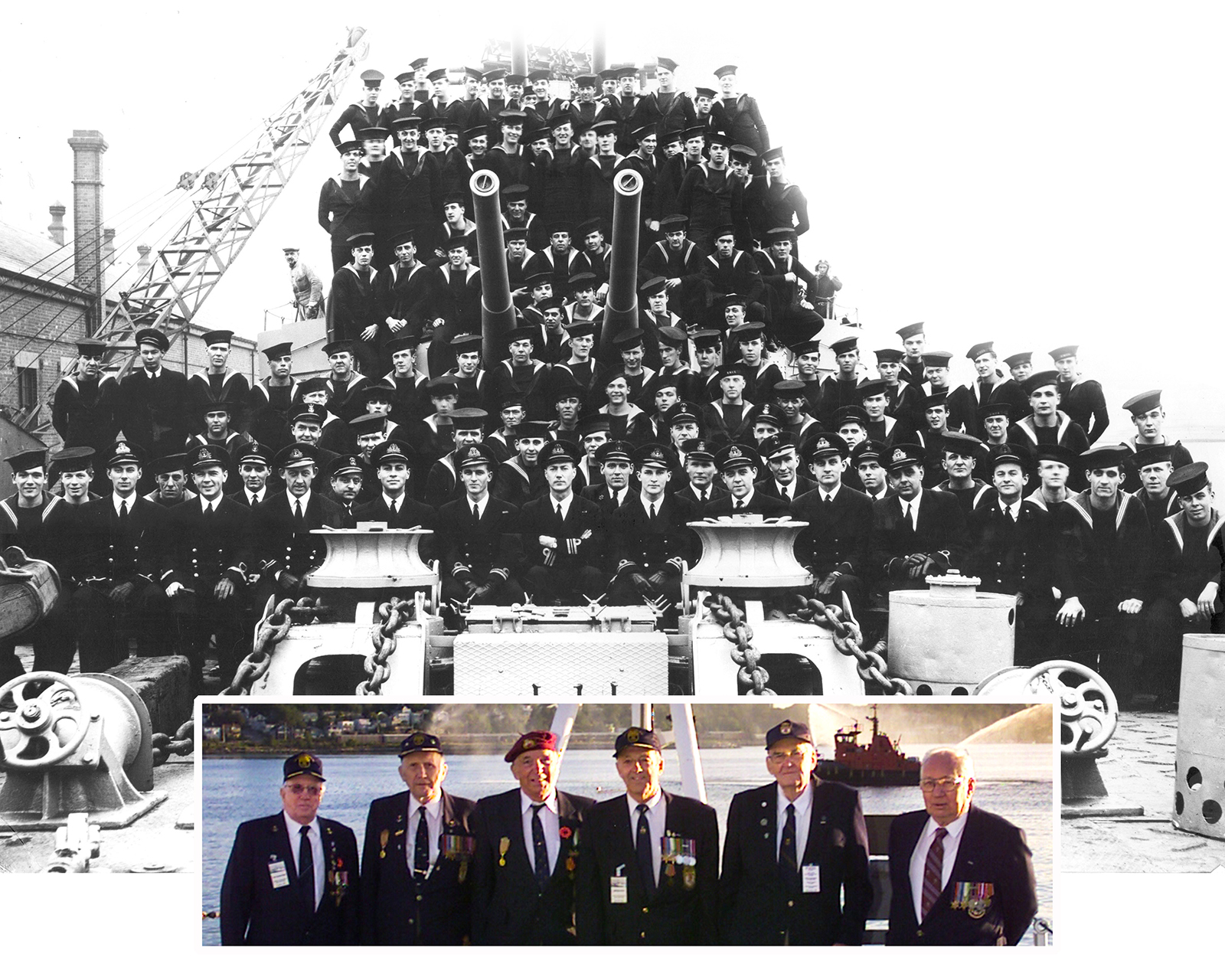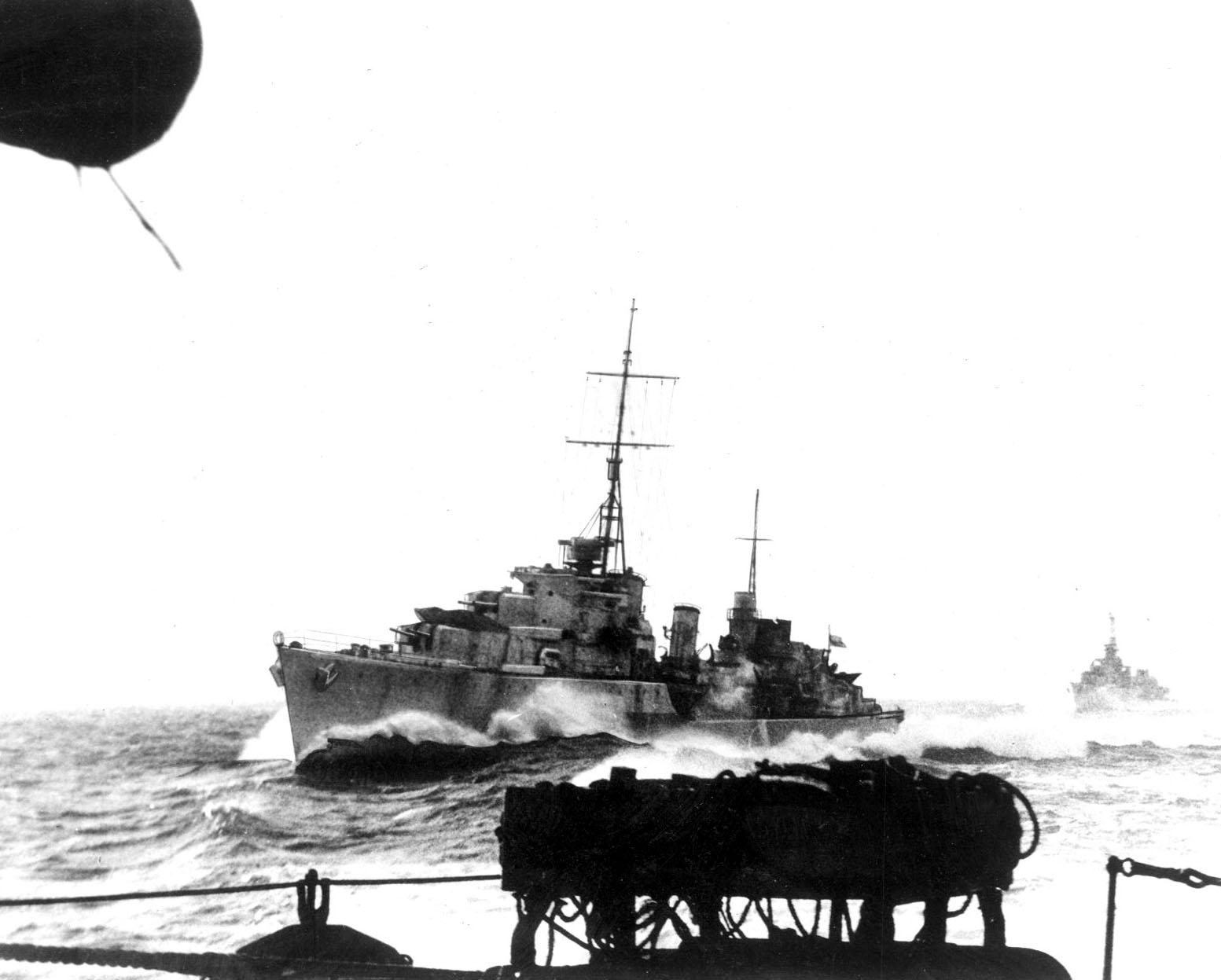Sailors in motor cutter save Athabaskan crew members in race back to England

DND
From left: Able Seaman Jack Hannam, Leading Seaman William McClure and Stoker William Cummings arrive safely in Penzance, England after the exhausting trip across the English Channel.
It was a night they never could have imagined.
What started as a routine patrol off the northern coast of France in His Majesty’s Canadian Ship (HMCS) Haida turned into a perilous run back to England in a 25-foot motor cutter.
It was the dead of night on April 29, 1944, and Haida was patrolling with its sister ship HMCS Athabaskan in support of a British mine-laying operation. Athabaskan had just received orders to intercept German warships that had been spotted in the area by coastal radar.
Stoker William Alfred Cummings from Toronto and Leading Seaman William Arthur McClure from Wellington, B.C., were aboard Haida taking care of their usual duties.
Little did they know that the next few hours would call on all their strength, stamina and courage.
As Athabaskan engaged two German naval vessels, it was struck by a torpedo that started a fire and ignited the four-inch ammunition magazines. This caused a devastating explosion and it began to sink.
Telling Athabaskan “they’d be back for them”, Haida’s commanding officer Harry DeWolf ordered his ship to drop smoke to cover Athabaskan and continued the chase, driving one enemy destroyer hard on shore and chasing off the other.
It quickly returned to Athabaskan, finding about 100 survivors in the water.
DeWolf ordered all of Haida’s boats and floats lowered in an effort to rescue as many of Athabaskan’s crew as possible. Heavy scrambling nets were hung over the sides and Haida seamen began to pull exhausted and oil-soaked sailors aboard.
DeWolf knew he could not stay long, but delayed as long as he could to pick up as many survivors as possible.
As the day dawned, he ordered Haida’s motor cutter to be dropped unmanned into the water to allow survivors from Athabaskan to climb into it.
However, just as it was being lowered, Cummings, McClure and Able Seaman Jack Hannam decided to jump in.
They picked up six survivors from Athabaskan and two crew members from their own ship who had fallen from the rescue nets.
Haida quickly departed the area due to the onset of daylight and heightened risk from air and sea attacks, leaving the motor cutter behind.
At one point the cutter’s engine stopped on a fouled intake. Applying the remedy known around the world for recalcitrant machinery, Cummings gave the intake a good thump with a wrench, at the same time pressing the starter. Recognizing the touch of a master mechanic, the engine coughed into life, and McClure set a course for England.
Four German minesweepers hove into view and McClure watched with a touch of alarm as one headed towards his boat. He cranked all speed, but the minesweeper overtook them. Then, for whatever reason, it turned away and the cutter chugged on.
After almost completing the 100-mile journey and just seven miles short of the English coast, the engine failed again. As two fighter jets came in flying low, the men in the cutter fired a flare before realizing they were German Messerschmitts. They roared overhead but continued on without paying any interest to the cutter.
Cummings got the engine started again. They had no medical supplies and began to worry about some of the rescued sailors. There was still a ways to go but they knew Haida would have made their plight known and somebody would be looking for them.
The Royal Air Force eventually spotted them and an air-sea rescue launch brought them safely into Penzance Harbour in Cornwall, England. They were all taken to hospital for overnight observation and all but one of the rescued sailors left the next day.
Both Cummings and McClure were awarded Mention in Despatches on September 9, 1944, for “courage, resolution and devotion to duty in action with enemy destroyers in rescuing survivors from HMCS Athabaskan.”
Overall, Haida was able to rescue 44 of Athabaskan’s crew, but 128 men were lost. A further 83 men were taken prisoner by German minesweepers.
For Cummings and McClure, it was a night they would never forget.
Sources
Tales of the North Atlantic, by Hal Lawrence
Image Gallery
Page details
- Date modified:


